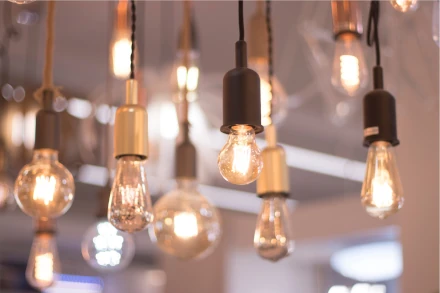In today’s fast-paced world, LED lighting has transformed the way we illuminate up our spaces. From energy efficiency to superior lighting quality, LED lights offer a wide range of benefits that make them a popular choice for both residential and commercial settings. However, it is important to understand the proper installation, maintenance, and benefits. In this post, we’ll explore the essentials of LED lighting, correct installation, the importance of maintenance, and key benefits. Let’s shed light on the world of LED lighting and discover how they can brighten your life in more ways than one.
Basics of LED Lighting: How They Work
LED (Light Emitting Diode) lighting has become incredibly popular due to their energy efficiency, longevity, and versatility. To understand them fully, it’s essential to expolre how they work and the different types available.
How Do They Work?
LED lights operate on the principle of electroluminescence. Instead of relying on heating a filament like traditional incandescent lights, LED lights convert electrical energy firectly into light through semiconductor materials.
The core component, the LED chip, typically consists of materials like gallium, arsenic, phosphorous, and nitrogen. Applying voltage to the chip releases photons, emitting light. The colour of the light emitted depends on the materials used in the chip.
Types of LED Lighting
LED lighting is available in various forms to suit different needs. Here are some common types:
LED Lamps:
LED Lamps are similar in shape and size to traditional incandescent bulbs, making them an easy retrofit option. They come in a range of colour temperatures, wattages, and fitting types. All of these will allow you to choose the desired bulb for your space. A common example of a LED lamp would be the Crompton Lamps 4214 | Dimmable LED Bulb GLS Filament ES-E27 7.5W 2700K.
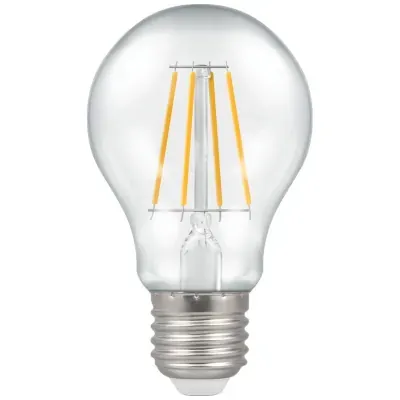
It is always essential to check the type of lamp holder is compatible with the lamp. The thing to check for is that your lamp has the correct fitting type. The most common types are the ES (screw-on) & BC (2 pins pointing out the side).
Another great example of an ES LED bulb is the Crompton Lamps 7161 | LED Candle Lamp Dimmable SES-E14 5W 2700K.
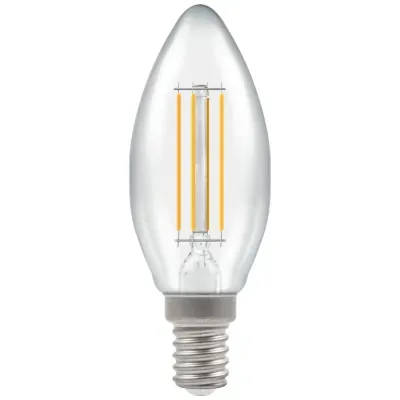
The difference between an E27 and E14 fitting is the width as shown in the images above.
We also stock BC LED lamps here at GoSparky and an example of one is the Crompton Lamps 4207 | Dimmable LED Bulb GLS Filament BC-B22d 7.5W 2700K.
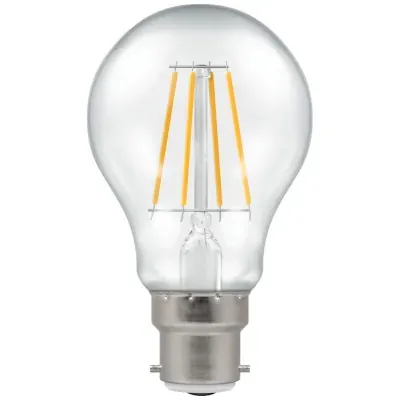
The visible difference at the base is what makes it easy to identify what fitting is currently installed. However, if you are installing new lights make sure that your lampholder and lamp are the same type.
To find a LED lamp that suits your needs check out our Lamps & Tubes section.
LED Downlights:
LED downlights are an excellent option to highlight specific areas or to add a modern look. Their versatility allows installation in both residential and commercial settings. With varying colour temperatures, wattages and ingress ratings, you can easily find the right light for your area.
A brilliant option for that will accomodate all types of installation needs is the KSR KSRFRD385 | Firebreak QR Select II IP65 4CCT Fire Rated LED Dual Wattage Dimmable Downlight, White.

This downlight offers every additional specification needed for an efficient and safe light that can operate in harsh conditions.
LED Tubes:
LED tubes are designed to replace fluorescent tubes that are commonly found in commercial settings. They offer better energy efficiency, longer lifespan, and improved light quality compared to fluorescent tubes.
If you are looking for a LED tube the Crompton Lamps LFT422CW | 22w 4ft 4000k 2050lm T8 G13 LED Non-Dimmable Glass Tube, Cool White is a brilliant option.

These T8 LED tubes are offered in a range of sizes and wattage outputs to cater to your needs.
LED Batten Lights:
LED battens offer a streamlined design that is ideal for a variety of spaces, providing uniform lighting across larger areas. They are available in various lengths and wattages, making it easy to select the perfect fit for your lighting needs.
The size needed is always personal as it is based off of your space and its requirements. A brilliant example is the KSR KSR98192 | LED Batten Light Navara Pro X5-Select Multi Wattage & 3CCT 5ft.
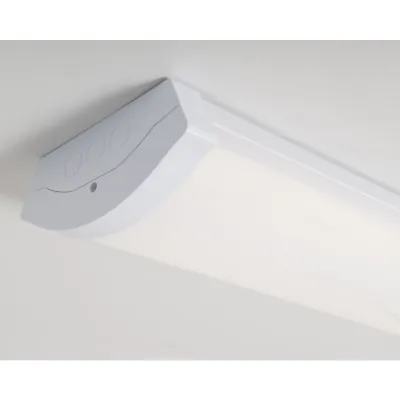
This LED batten is ideal for an office environment, providing perfect illumination as well as its sleek white finish.
If you are you looking for a more industrial option for a warehouse or even for outdoor use then the KSR KSR9881 | LED Batten Light Navara X4T-IP65 Anti Corrosive 40w 4000K 4ft is what we recommend.

LED strips:
LED strips, also known as LED tape lights consist of flexible strips with adhesive backing to make mounting simple on a variety of surfaces. They are popular for decorative purposes, accent lighting, and creating ambiance in both indoor and outdoor spaces. A solution to fit all lighting needs is the Robus RVA12RGBW6710-40 | Vegas 12W/m 4000K 320lm/m 24V IP67 Weatherproof 60LED/m LED RGBW + Natural White Strip Lights, 1m.

This brilliant lighting option suits any space in a residential setting with RGBW and natural white colours, and its weatherproof capability allows for indoor or outdoor installation.
LED Panels:
LED panels are flat, thin light fixtures that provide even illumination across the surface. They are commonly used in offices, schools, and hospitals. They offer a sleek and modern lighting solution. A great example is the Crompton Lamps 15265 | LED Panel 28W 400K 600x600mm.
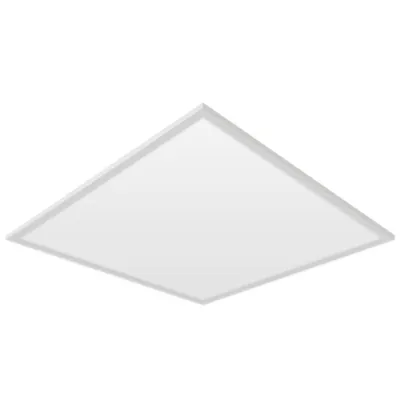
This panel delivers 28w of efficient lighting with a 4000K colour temperature. Its slim design fits standard 600x600mm ceiling grids for easy installation. Enjoy long-lasting illumination and reduced energy costs with this stylish and practical lighting solution.
LED Floodlights:
LED floodlights are powerful lighting solutions designed to illuminate large areas with bright, even light. They are ideal for outdoor applications and offer significant energy savings to traditional lighting options.
A brilliant choice would be the HALO MOON100W | Moonraker 100W IP65 6000K LED Floodlight.

The HALO MOON100W | Moonraker 100W IP65 6000K LED Floodlight delivers bright, white light at 6000K, ideal for illuminating large areas. With an IP65 rating, it resists dust and water, making it perfect for outdoor use. This 100w floodlight offers energy efficiency and a long lifespan, ensuring reliable performance for security and outdoor events.
LED 2D Bulkheads:
LED 2D bulkheads offer energy-efficient lighting with uniform illumination for a wide range of spaces. Available in various IP ratings, including IP65 models for outdoor use, offering low maintenance and long-lasting performance.
We recommend the HALO TB32-12GTR-MNF-E | Thunderball 12W IP65 2D Tri-Colour LED Bulkhead, Emergency.

This bulkhead offers versatile tri-colour lighting with an IP65 rating for robust outdoor and indoor use. Featruing an emergency function, it ensures reliable illumination during power outages, making it ideal for safety-critical areas.
Understanding the variety of forms that LED Lights come in is essential to help you choose the right light fittings. In this next section we will focus on how to install your lights.
How to Install LED Lights
Installing your lights might seem like a daunting task, but with the right guidance and tools it is extremely straightforward. Thanks to the pevious section you should know about finding the right lamps due to their different sizes and bases. For other lights it will be about making sure the light output (lumens) is correct for the room size. Also if you want a dimmable light make sure it is compatible with a dimmer before buying.
Supplies Needed:
- Lights – Make sure you have the correct lights before starting the installation process.
- Screwdriver – This will often be needed just for bigger lights such as battens or bulkheads.
- Ladder or step stool – Ensures safety when reaching for lights that are installed either on the ceiling or high on a wall.
- Safety gloves – Always recommended to wear gloves for added protection.
- Voltage tester – This helps you to ensure that the power is off before handling any electrical components.
- Electrical tape – Helps to insulate and protect electrical connections.
Installation Process:
- Read manufacturer instructions – Each light should come with instructions, if not they can be found online.
- Turn off the power – Before starting make sure the power is turned off at the main electrical panel.
- Remove existing lamps – Any pre-existing lights should be removed either by unscrewing or unclipping them.
- Check compatibility – This step should have been done by now but it’s always good to double check you have the correct lights.
- Connect wiring – Carefully connect the electrical wiring of lights to the corresponding wires of the fixture. Wire connectors and electrical tape are useful.
- Secure the lamp – Once wiring is connected, securely fasten the lights into the fixture according to manufacturer instructions.
- Restore power – After all these steps are complete you can turn the power back on and test your lights are working properly.
It is important to note that the specific installation process will vary between manufacturers so always refer to the instructions. LED strips are often installed differently due to their nature.
How to Maintain Your LED Lights
To achieve longevity for your lights, you must perform proper maintenance. In this section, we will discuss the signs indicating that your LED light needs maintenance, how to perform it, and how often to do it.
Signs Your LED Light Needs Maintenance:
Regularly inspecting your LED lights for signs of wear or damage is crucial to identify when maintenance is required. Here are some common indicators:
- Dimming or flickering – If you notice a significant decrease in brightness or intermittent flickering, it may indicate a problem with the electrical connections or the lamp itself.
- Discolouration – Over time they can accumulate dust or dirt, leading to discolouration or yellowing of the lamp. This will affect the quality of the light emitted.
- Overheating – LED lamps are designed to generate less heat than traditional lights. If you notice excessive heat coming from the lamp or surrounding area, it could indicate a problem with the heat dissipation system or improper installation.
- Inconsistent light ouput – If the light emitted by your LED light becomes uneven or starts to flicker, it may be a sign of a failing chip or driver.
Steps to Clean and Maintain the LED Lights:
Regular cleaning and maintenance will help keep your lights in optimal condition. To ensure proper care, follow these steps to clean and maintain your lights.
- Turn off the power – Before performing any maintenance, ensure the power is turned off to prevent any electric shocks.
- Remove the light – If possible, remove the light from its fixture for a thorough job.
- Dust and wipe – Use a microfibre cloth to gently remove exterior dust. If you find dust inside your light you should look to invest in a light with a greater ingress rating. Avoid using harsh materials so that you don’t scratch or damage the light.
- Inspect and replace – While performing maintenance closely inspect the light for any signs of damage or wear. This includes the wiring connections and mounting hardware. If you notice any issues, refer to the manufacturer booklet to check for warranty or replace the lamp if neccessary.
Benefits of Using LED Lights
The range of benefits is vast and is what makes them a superior choice for lighting solutions. In this next section, we will look at the advantages such as energy efficiency, long lifespan, eco friendliness, and better light quality.
Energy Efficiency:
One of the primary benefits of LED lighting is their exceptional energy efficiency, due to their ability to have impressive light putput using less watts. Compared to traditional incandescent or fluorescent bulbs, LED lights consume significantly less energy to produce the same amount of light. On average, they use 75-80% less energy, resulting in substantial energy savings and up to £40 a year saving on utility bills.
Long Lifespan:
They have an impressively long liefspan compared to conventional lights. While traditional lights might only last a few thousand hours, LED lights can last up to 50,000 or more. An easy way to find out is to check for the L70 rating for the light you’re looking to purchase. The extended lifespan makes it a more cost-effective lighting solution as you won’t have to replace lights as often.
Eco-Friendly:
LED lights are also an environmentally friendly lighting option. Unlike traditional lights, they do not contain harmful substances such as mercury. This means they are safer when disposing and do not pose a threat to the environment. Also, due to them emitting less heat it reduces the energy required for cooling systems. Additionally, their lifespan reduces waste and the need for further replacements.
Better Light Quality:
They also provide superior light quality compared to traditional lights. They offer a range of colour temperatures, allowing you to choose the desired ambiance for your space. LED lights produce consistent and uniform light, eliminating flickering or uneven illumination. They allow you to enjoy brighter, crisper, and more vibrant lighting in your home or workplace.
Conclusion
Understanding LED lights is crucial for proper installation, maintenance, and maximising their benefits. We covered the basics of LED technology, the importance of selecting the right light, and the key steps for installation and maintenance to ensure optimal performance.
They are an excellent choice for energy-efficient, long-lasting, and eco-friendly lighting. Their superior light qualityand reduced environmental impact make them a standout in the lighting industry.
Upgrade to LED lighting today to enjoy enhanced lighting and the vast range of benefits we have discussed.

